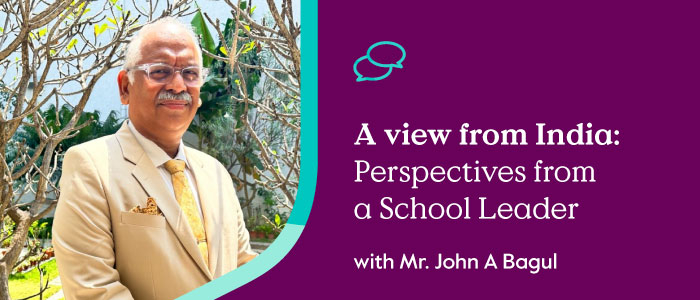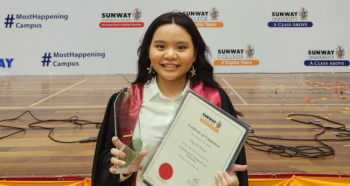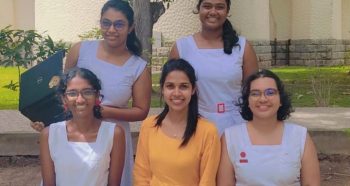South City International School is a Cambridge school in India. Established in 2009, the school’s vision is to cultivate young minds into truly global citizens within a nurturing and compassionate atmosphere.
The students and teachers at the school aim to create a vibrant, dynamic and inclusive learning environment.
As part of our series of blogs from school leaders in India, this article shares the reflections of the founding Principal of South City International School, Mr John Bagul, about inclusive education practices. In his own words, he tells us five reasons why inclusion is important in education and what steps can be taken to ensure classrooms are inclusive.
A definition: Inclusive education is commonly defined as teaching that engages students in learning, which is meaningful, relevant and accessible to all. It embraces the view that individual difference is a source of diversity, which can enrich the lives and learning of others (Hockings, 2010).
1. Education for all
Inclusion within the school means an equal opportunity of education to all children irrespective of their differences. A school should provide knowledge to all students and have the suitable staff and infrastructure to serve all children to the best of its capacity. An inclusive education means all children in the same classroom are provided with the opportunities to develop a friendship with one another, to learn about each other and accept their individual differences.
2. Meeting the needs of every child
One of the ways we can achieve inclusion in classrooms is to encourage aspiring teachers to learn about inclusion as a practice. In my school, we have a wide range of students, all with different needs. We have qualified counsellors and special educators who help us develop personalised plans for each child. They also support us in giving extra time in examinations for the children who need it. All children in our school are involved and encouraged to participate in school events and activities.
3. Equipping children with the skills they need
In my school, we follow an Individualised Education Plan (IEP) for each student according to their specific needs. Individualised Education Plans are designed by teachers in collaboration with the learner and their parent(s). We believe in an inclusive curriculum that balances physical activities with the theory. Every child should be equipped with lifelong skills, vocational guidance, participate in sports and performing arts alongside their academic education. Of course, this depends on the capabilities of each child.
4. Breaking myths and misconceptions
In India, although things are improving, there are some common misconceptions about inclusion amongst school leaders and educators. The same can be said for the rest of the world. I would like to remind my fellow school leaders that inclusion is not an unrealistic idea, it does work and with the right framework, it does not have to increase the workload on teachers.
5. Helping to change attitudes and behaviours
I have experienced mixed reactions from teachers and parents towards inclusive education. Some are accepting and have warm attitudes towards inclusion, while some feel overwhelmed by the idea. The key to changing attitudes towards inclusion is through sensitisation programmes and workshops and these have helped tremendously in the past two decades.
Read other blogs from this series
Read our Education Brief on inclusive education
Want to become a Cambridge school in India? Register your interest here





